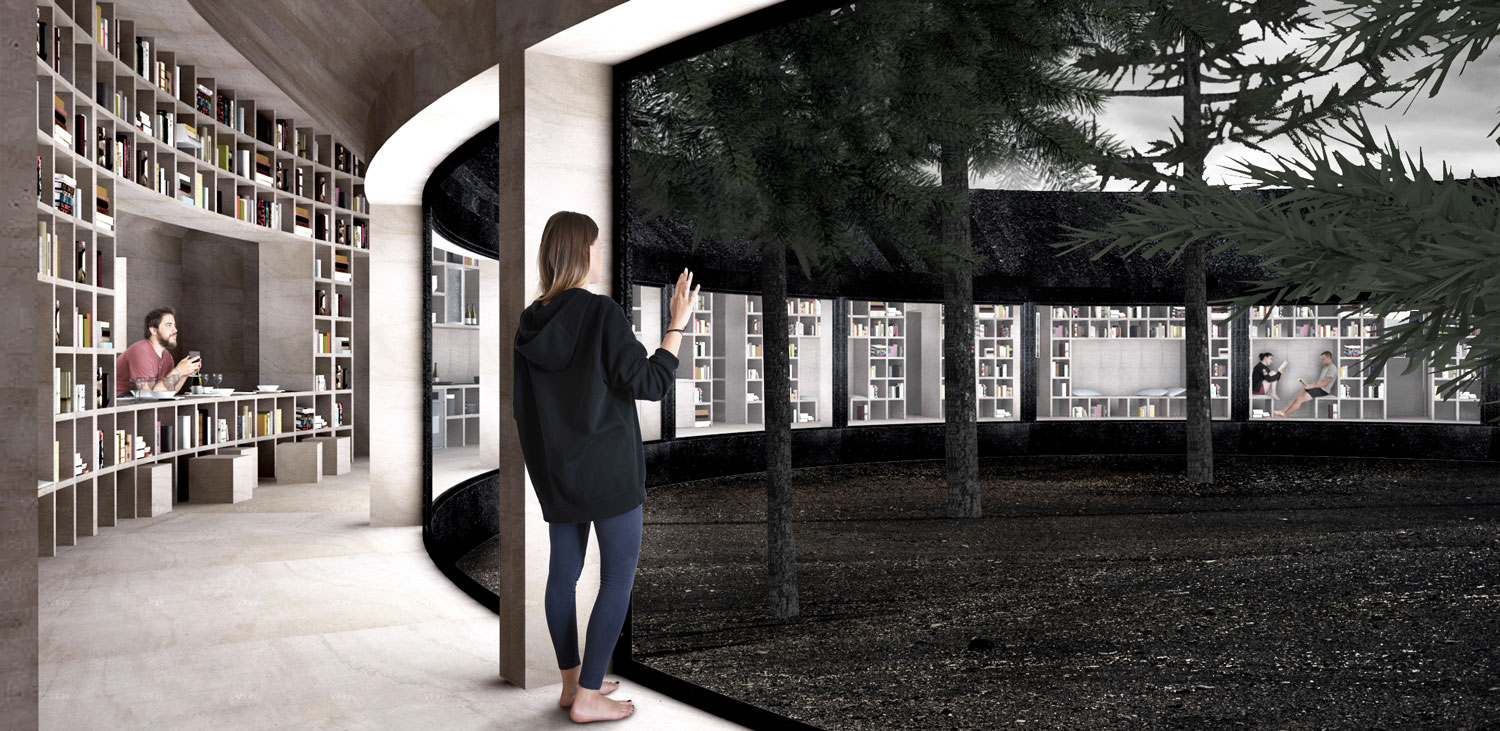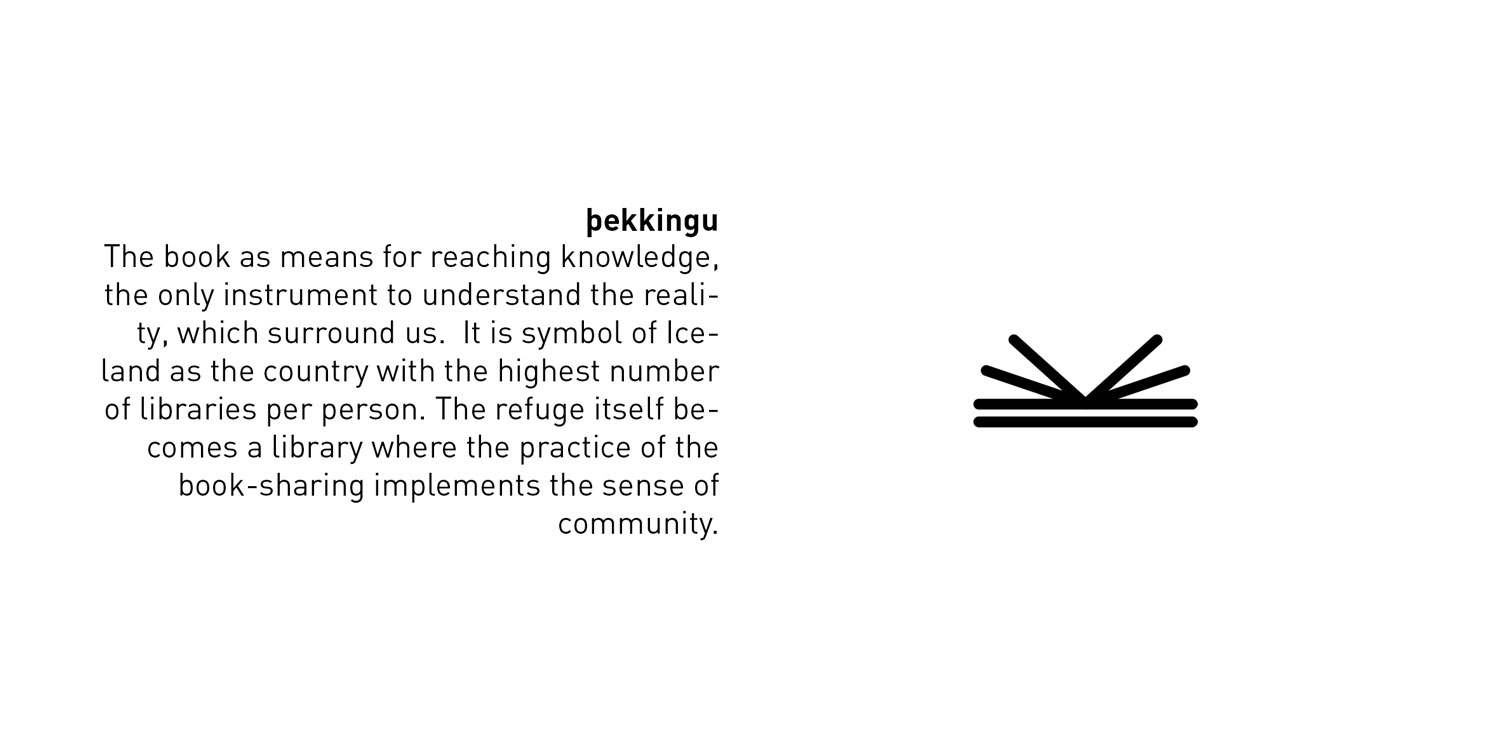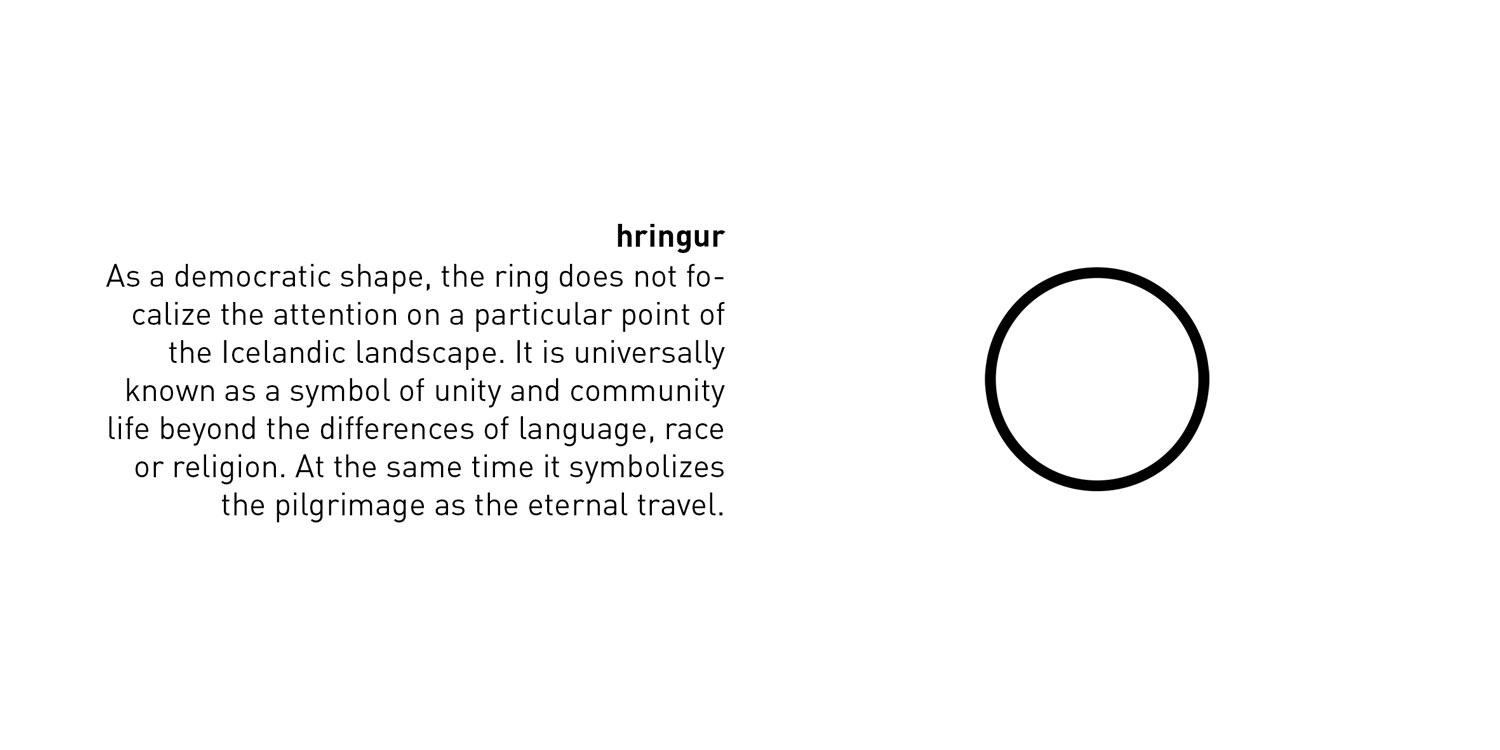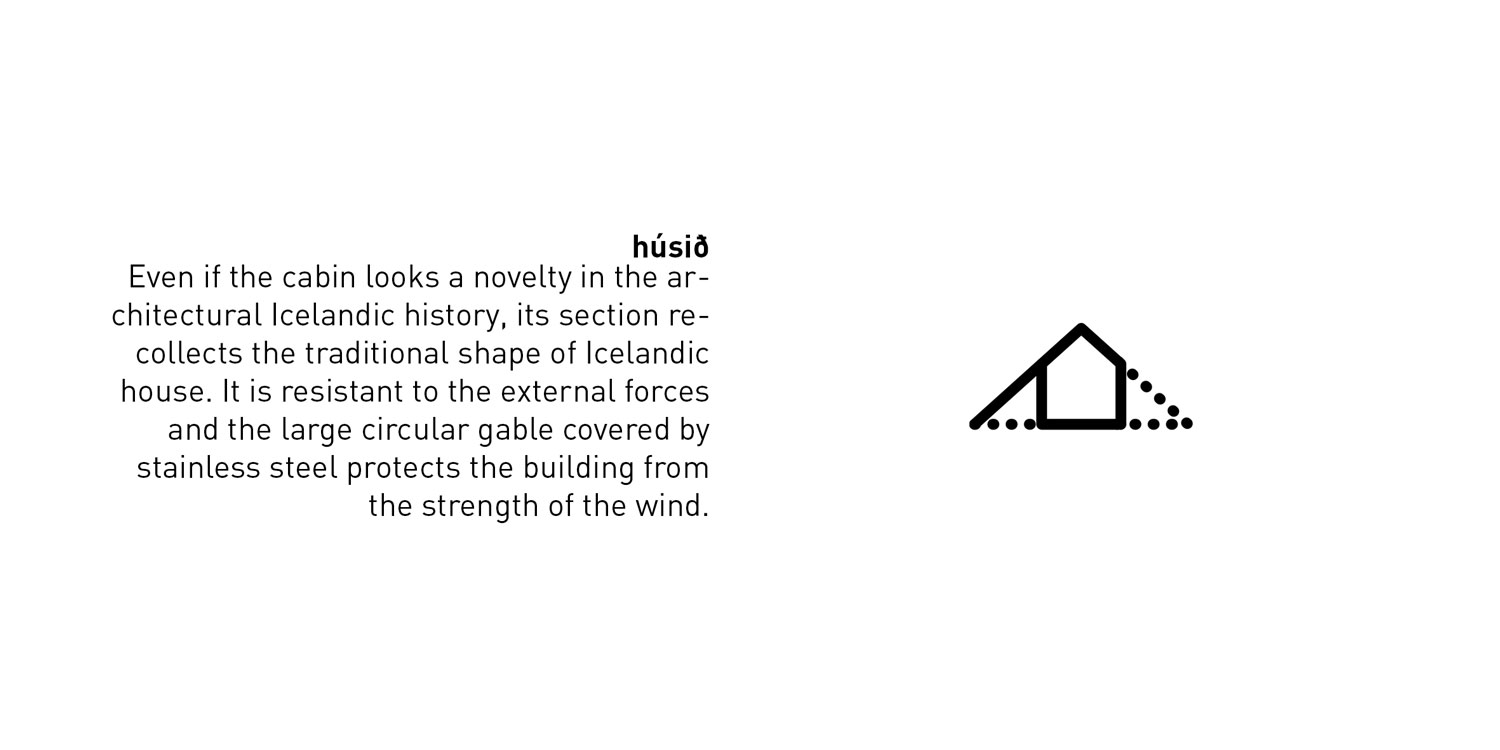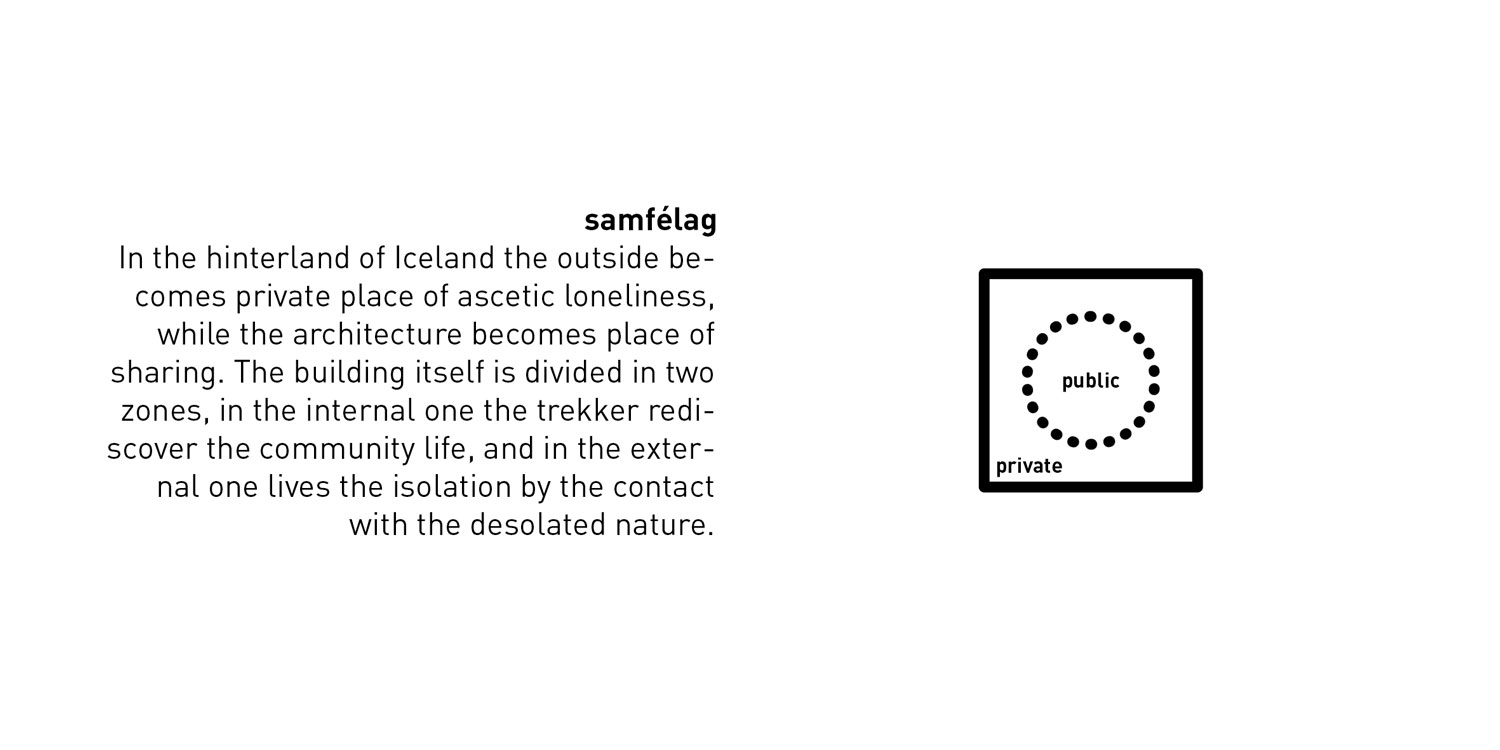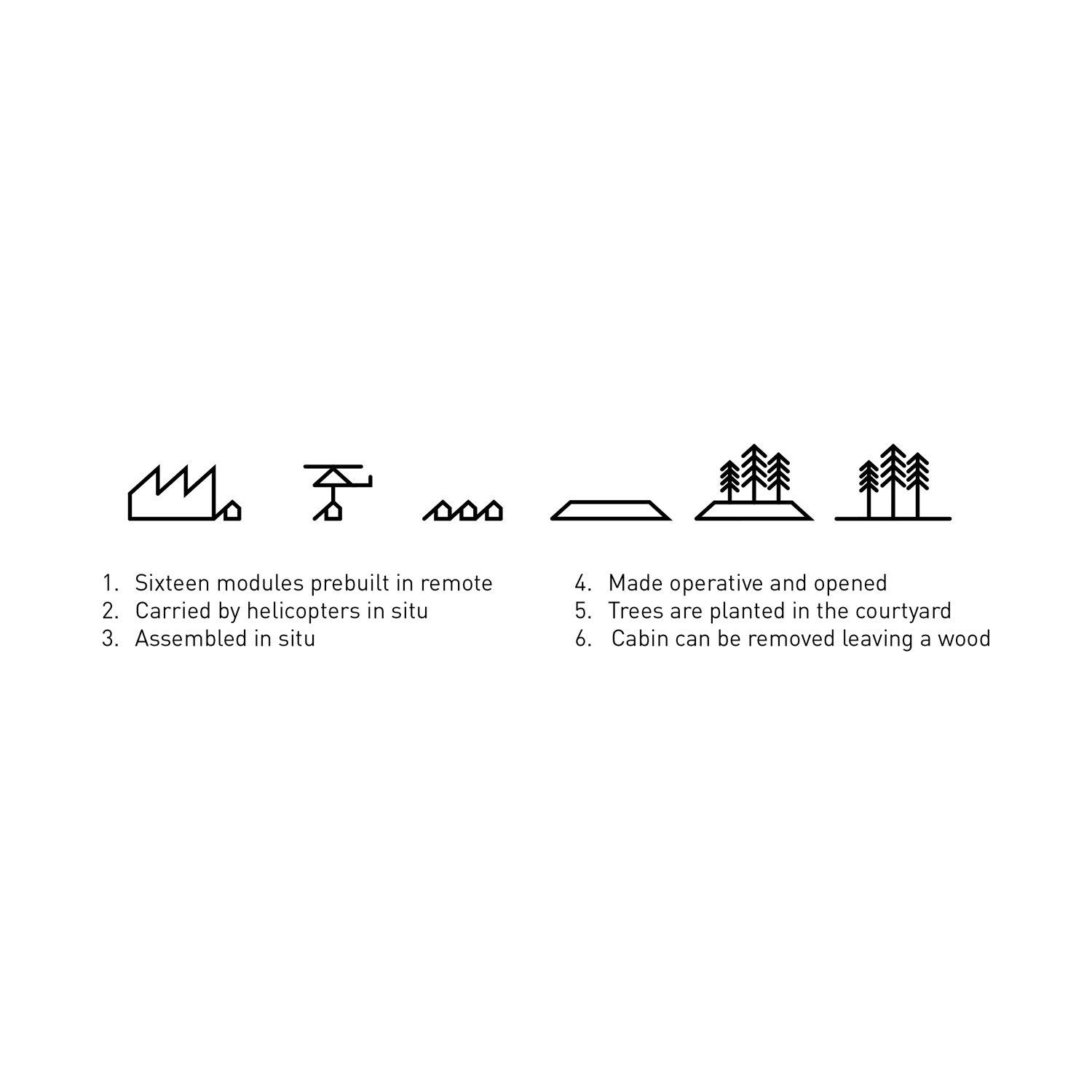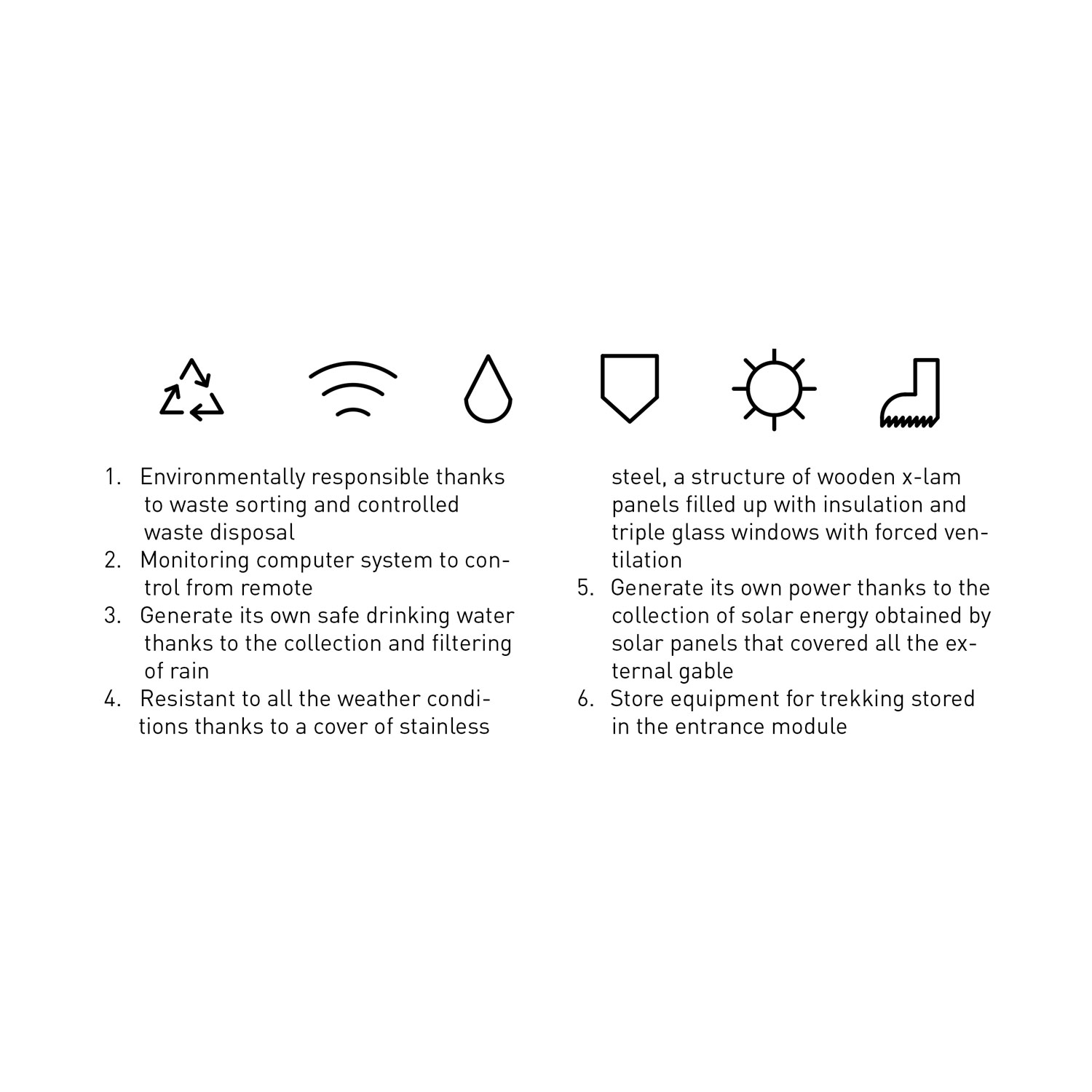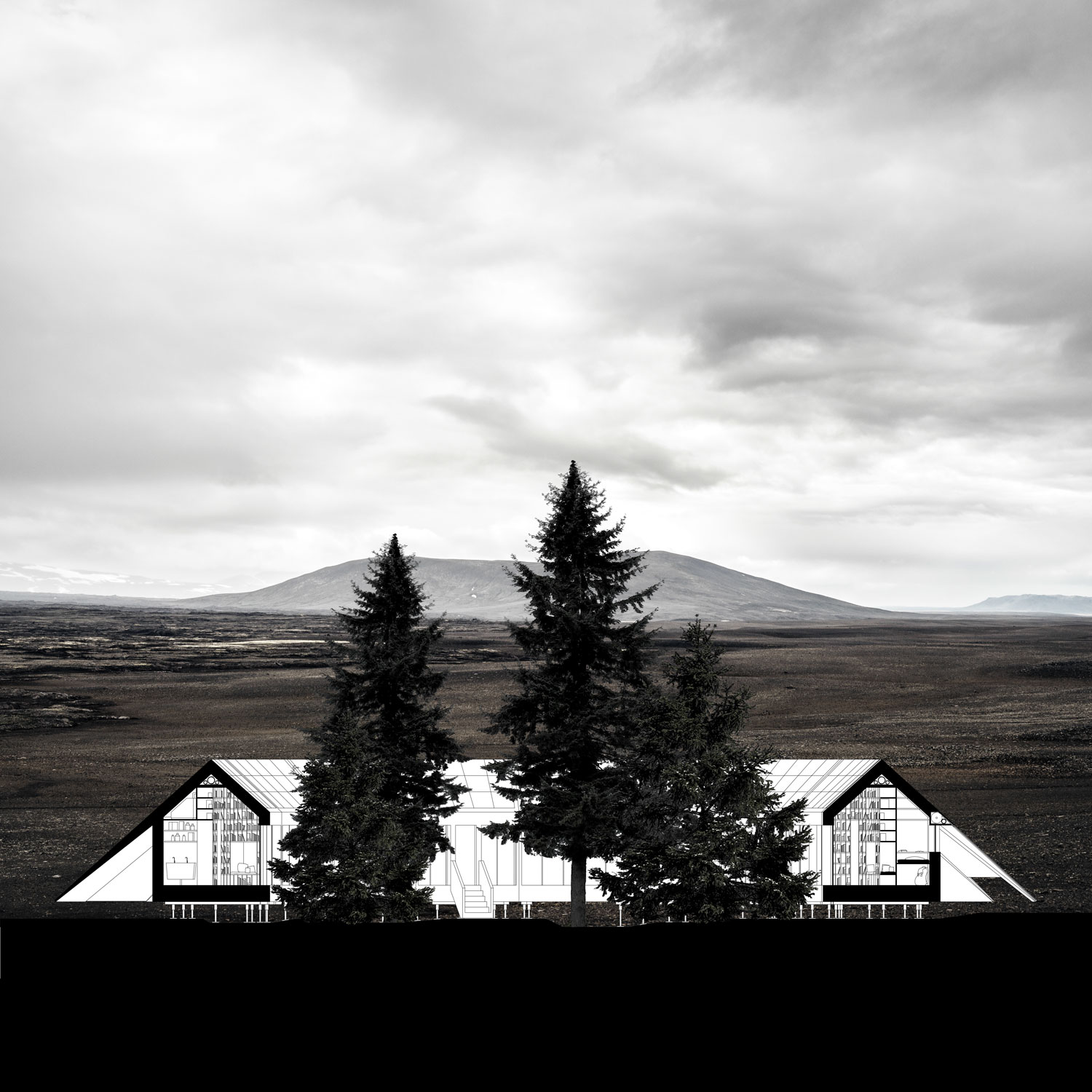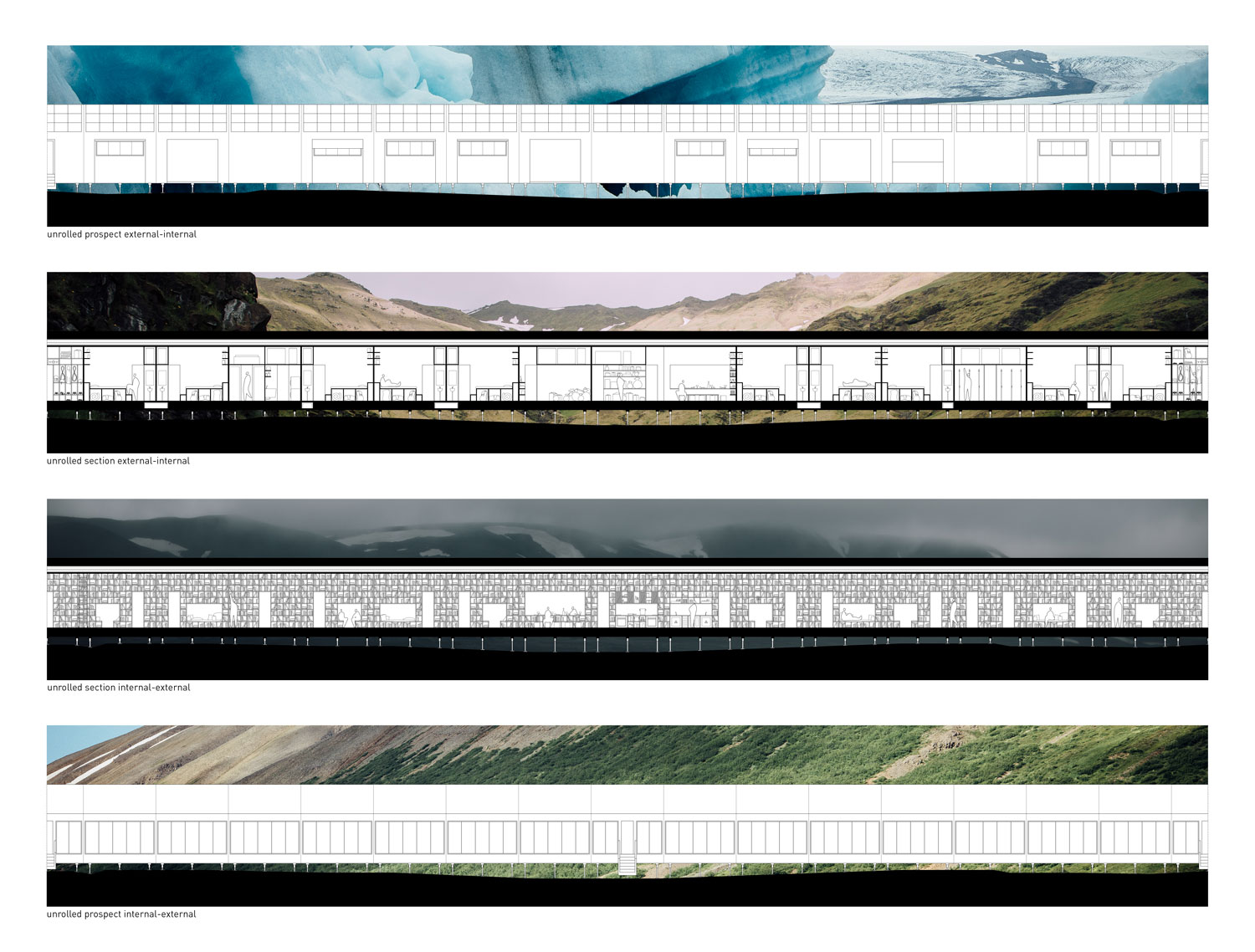1824-JDO-IS-2016
Client: Beebreeders
Status: Competition (2016)
Location: Reykjavik, Iceland
Coordinates: 64.8638954, -23.4951628
Climate: Artic / polar, Cold
Material: Wood
Environment: Mountain
Visualizer: Studio
Scale: Medium
Types: Hotel, Residential
«If you are lost in an Icelandic Forest, stand up.» – Ancient Icelandic proverb
Iceland is one of the most attractive touristic destinations because of its unaltered, virgin, ancestral landscapes. It is the youngest surfaced land, and it has the same appearance of our World before the human being. For this reason, to project a building in the Icelandic earth land is a huge responsibility. On one hand, the trekking cabin should become a unique icon in its own; on the other hand, it should symbolize the identity of Iceland, narrating both the history of its population and the development of its land.
I have decided to take as inspiration the ancient forests that covered more than a half of the Icelandic territory. They gradually disappeared with the human colonization; in fact, the wood was necessary for erecting buildings and boats and fort heating the houses. Therefore, the fact that nowadays only 1% of the land is covered by trees, it is a human fault, not a natural transformation. For this reason, the cabin looks like an essential and mimetic element, and trekkers can recognize it by the archetypes of the shelter into the wild: the trees that emerge from the building.
I imagined a building with the double function of being a refuge for trekkers and an incubator for new born woods. It is a ring around the trees, which protect them from the strong wind while they are growing. In order to not spoil the pure Icelandic landscape, the building that will sign it will be not striking and eye-catching, but mimetic. As in a deserted land a little wood is easily noticeable, in the Iceland hinterland a trekker – after long days of loneliness – can better notice another one. That is why in Iceland we can overturn the relation between public and private. In other words, the traveler experiences the privacy in the outside, while rediscovers the connection with others in the cabin. It is in the ring that the trekkers enter in contact with each other. In fact, the cabin is a knot along the lonely path where – for a while – the main focus is the relation between people.
The ring is not only a shelter for the growing trees, but also a symbol of unity that transcends cultures, borders and languages. This ring wants to celebrate the importance of encounter, sharing and community.
In order to underline the innovative relation between private and public, the building is divided in two concentric areas. The external one is occupied by the service areas and the private single berths opened on the landscape. While the internal one is a unique and continuous space completely opened on the centre. A circular bookcase is the filter between the two zones. This is the only element of the trekking cabin and all the functional parts are shaped inside it. The bookcase is representative of the popular Icelandic identity; in fact, Iceland has the highest number of library per person in the world.
In addition, books represent the Knowledge, so knowledge is the filter between private and public. This is because just trough knowledge people can overcome the fear caused by ignorance and prejudices. Knowledge is the key for choosing the right path to follow, as a consequence I called the project Vegvisir. A Vegvisir is an Icelandic magical stave intended to help the travelers find the way through rough weather. In the past, Icelandic sailors used to paint it on their boats in order to have the capability to find the route. As the Vegvisir, the projected trekking cabin wants to help the travelers to find the way, both physically and metaphysically.
«If this sign is carried, one will never lose one’s way in storms or bad weather, even when the way is not known.» – Huld Manuscript, Geir Vigfusson, 1847
Skógur
The tree is the archetype of the shelter in the nature. It evokes the ancient identity of an Iceland covered by forests, and one of the aims of Icelandic government is to reforest the country. In the project, the trees sign the presence of refuge in the deserted hinterland.
Samfélag
In the hinterland of Iceland the outside becomes private place of ascetic loneliness, while the architecture becomes place of sharing. The building itself is divided in two zones, in the internal one the trekker rediscover the community life, and in the external one lives the isolation by the contact with the desolated nature.
Hringur
As a democratic shape, the ring does not focalize the attention on a particular point of the Icelandic landscape. It is universally known as a symbol of unity and community life beyond the differences of language, race or religion. At the same time, it symbolizes the pilgrimage as the eternal travel.
Þekkingu
The book as means for reaching knowledge, the only instrument to understand the reality, which surround us. It is symbol of Iceland as the country with the highest number of libraries per person. The refuge itself becomes a library where the practice of the book-sharing implements the sense of community.
Húsið
Even if the cabin looks a novelty in the architectural Icelandic history, its section recollects the traditional shape of Icelandic house. It is resistant to the external forces and the large circular gable covered by stainless steel protects the building from the strength of the wind.

